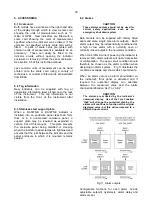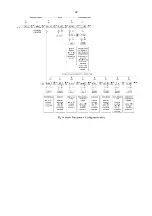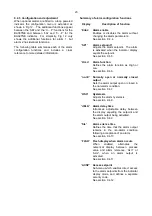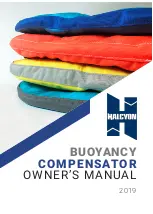
30
APPENDIX 2
ATEX dust certification
In addition to ATEX certification permitting
installation in Zone 2 gas atmospheres which is
described in the main section of this instruction
manual, the BA307NE and the BA327NE also
have ATEX Ex tc certification, allowing installation
in Zone 22 combustible dust atmospheres when
mounted in an Ex t panel enclosure.
A2.1
Zones and Maximum Surface
Temperature
Both indicators have been certified as Group II
Category 3D Ex tc IIIC T80°C Dc IP20 apparatus
with a Ta of –40°C to +70C. This is dust ignition
protection by enclosure complying with
BS EN 60079-31
Equipment dust ignition
protection by enclosure "t".
When mounted in an Ex t panel enclosure as
specified in section 5 of this instruction manual and
complying with the installation requirements of
BS EN 60079-14 the indicators may be installed in:
Zone 22
explosive atmosphere in the form of
a cloud of combustible dust in air is
not likely to occur in normal
operation, but if it does occur, will
only persist for a short period.
Be used with dusts having a Minimum Ignition
Temperature of:
Dust cloud
120°C
Dust layer on indicator
155°C
up to 5mm thick.
*
Dust layer on indicator
Refer to
over 5mm thick.
*
BS EN 60079-14
At an ambient temperature between -40 and +70°C
*
Unlikely occurrence in Zone 22
A2.2 Installation
All the circuits shown in the main section of this
manual for indicator installations in Zone 2
flammable gas atmospheres, may also be used for
Zone 22 combustible dust applications. The
indicator should be installed in an Ex t panel
enclosure located within Zone 22. The panel
enclosure containing the indicator should be
located where the minimum amount of dust will
accumulate on them and the installation should be
as specified in section 5 of this instruction manual
and comply with the requirements of EN 60079-14
.
BS EN 60079-14 requires that each of the wires
entering the hazardous area should be individually
fused and contain a means of isolation. However,
in practice instrumentation energised by a current
limited power supply that can be switched off is
often considered adequate.
A2.3 Maintenance
The BA307NE and BA327NE front panel keypads
are intrinsic safe Ex ic which allows them to be
operated in Zone 22
.
The IEC guidance on maintenance procedures
EN 60079-17 permits live maintenance in Zone 22
if a risk analysis demonstrates that this does not
introduce an unacceptable risk. The removal of
covers [opening of Ex tc enclosure] is permitted if
this can be done without contaminating the interior
of the enclosure and instrument with dust or
moisture. Some end-users may prefer not to
permit live maintenance to minimise risk.
ENSURE PLANT SAFETY BEFORE
STARTING MAINTENANCE
Live maintenance within the hazardous
area should only be performed when it is
permitted by risk analysis or when there
is no risk of a flammable atmosphere
being present.
Before closing the Ex tc enclosure
ensure that the sealing gaskets are
undamaged and free from dirt and
foreign bodies.
Inspection of
t
he indicator’s mechanical condition
and removal of accumulated dust from the front of
the indicator and the outside of the Ex tc enclosure
should be performed regularly. The interval
between inspections depends upon environmental
conditions. Removal of flammable dust should be
performed with care to avoid creating a dust cloud.


































